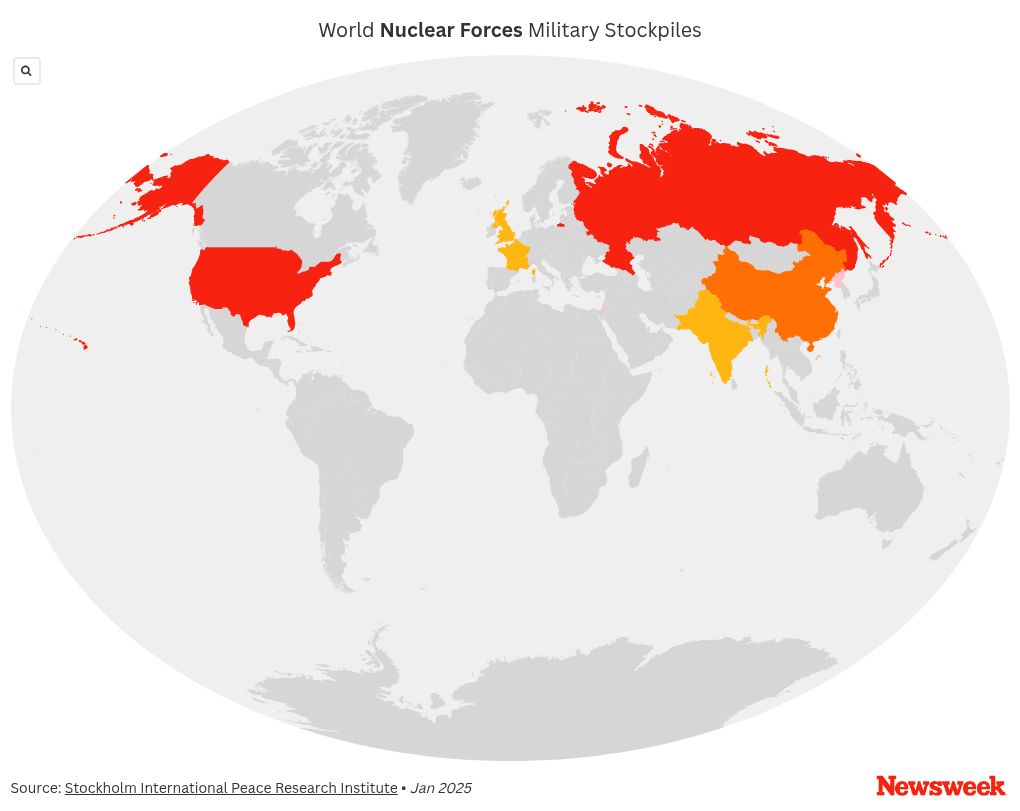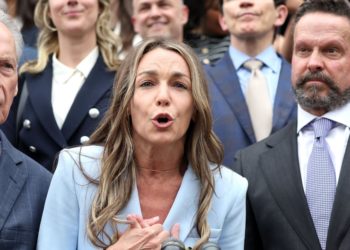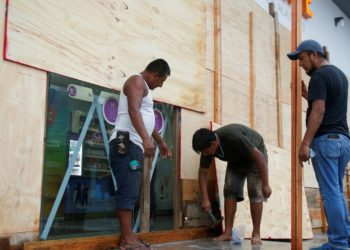North Korea has begun work on a new facility at its main nuclear complex, according to the head of the United Nations-backed atomic watchdog.
The facility, which reportedly resembles a suspected enrichment plant just outside of the capital of Pyongyang, could eventually provide fissile material to expand the country’s nuclear arsenal.
Why It Matters
North Korean Supreme Leader Kim Jong Un has vowed to continue building his UN-sanctioned nuclear arsenal, citing the “grave threat” posed by the U.S. and its allies, according to the U.S. Director of National Intelligence.
North Korea is estimated to have around 50 nuclear warheads and enough fissile material for as many as 90. Kim’s emphasis on expanding this capability—along with frequent ballistic missile tests and the abandonment of reunification as a long-term goal—has driven inter-Korean tensions to their highest level in decades.
Newsweek reached out to the North Korean embassy in China and the U.S. Department of Defense with emailed requests for comment.
What To Know
Rafael Grossi, head of the International Atomic Energy Agency (IAEA), said in a June 9 statement that the agency is “monitoring” a new construction at the Yongbyon nuclear complex, located about 60 miles north of Pyongyang.
The new building has features and dimensions closely resembling those of the Kangson site, a facility west of the capital long suspected to be a uranium enrichment plant believed to produce uranium-235, the fissile material essential for nuclear weapons.
“The continuation and further development of the DPRK’s (Democratic People’s Republic of Korea’s) nuclear programme are clear violations of relevant UN Security Council resolutions and are deeply regrettable,” Grossi said, using North Korea’s official name.
The report comes after news late last year that Kim Jong Un visited the Kangson facility. During the visit, he called for an increase in centrifuge production for weapons-grade material and warned against complacency, according to state media.
In April, Grossi warned North Korea’s progress on its nuclear agenda was “completely off the charts,” with no effective way to monitor its activities.
Attempts to stem the flow of materials that could aid Kim’s nuclear program became even more problematic last year when Russia vetoed a UN Security Council resolution that would have extended the mandate of a panel of experts enforcing sanctions on North Korea.
What People Have Said
Jenny Town, director of the Stimson Center think tank’s Korea Program and North Korea-focused analysis group 38 North, wrote for the Hudson Institute think tank: “Changing how the United States approaches its bilateral relationship with North Korea, not just the nuclear issue, will require enormous political capital, leadership, and resilience to criticism.
“The nuclear issue will still need to be part of the discussion, but keeping it as the main determinant of relations will prolong the stalemate and worsen the security environment.”
What’s Next
U.S. Director of National Intelligence Tulsi Gabbard warned lawmakers in March that North Korea is “probably prepared” to conduct a seventh nuclear test on short notice.
Members of President Donald Trump‘s team have reportedly discussed reopening dialogue with Kim, according to sources familiar with the discussions. During his first term, Trump met with Kim on three occasions in a failed bid to persuade the North Korean leader to walk back his nuclear weapons program.

The post Kim Jong Un Quietly Advances North Korea’s Nuclear Program appeared first on Newsweek.




